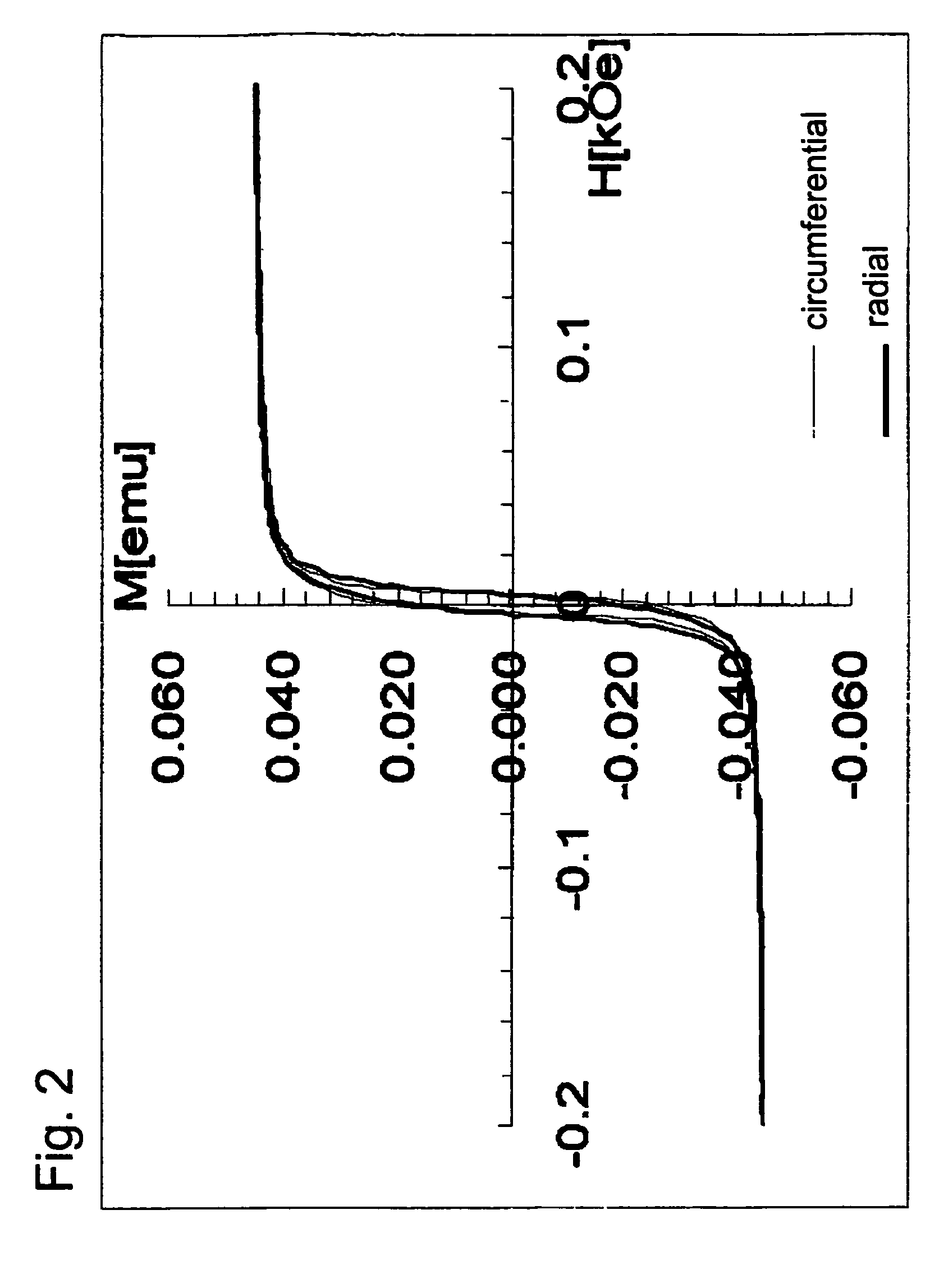Method of electroless plating on a glass substrate and method of manufacturing a magnetic recording medium using the method of electroless plating
a technology of glass substrate and manufacturing method, which is applied in the direction of magnetic materials for record carriers, liquid/solution decomposition chemical coatings, instruments, etc., can solve the problems of glass substrate, difficulty in cost reduction, and informing a plating film on it with satisfactory adhesiveness by means of electroless plating method, so as to improve the quality of plating, and reduce the number of catalytic nuclei
- Summary
- Abstract
- Description
- Claims
- Application Information
AI Technical Summary
Benefits of technology
Problems solved by technology
Method used
Image
Examples
first embodiment
[0029]The first embodiment consists of glass activation step S1, adhesion layer formation step S2, catalyst layer formation step S3, catalyst activation step S4, drying step S7, and electroless plating step S8 of the steps shown in FIG. 1.
[0030]The glass activation step S1 is included in this embodiment because the glass substrate surface is advantageously cleaned and activated in advance in order to chemically bond the silane coupling agent of the adhesion layer to the glass substrate.
[0031]For this activation, the glass substrate preferably is subjected to acid etching on the glass substrate surface by dipping it in an aqueous solution of hydrofluoric acid (HF), for example. This acid etching removes the existing old inactive oxide film on the glass substrate and forms a new oxide film, increasing the number of hydroxyl groups that bond to the silane coupling agent. Further, sequential pretreatments for this acid etching preferably are performed, including alkali degreasing using ...
second embodiment
[0038]The second embodiment consists of a glass activation step S1, adhesion layer formation step S2, catalyst layer formation step S3, catalyst activation step S4, drying step S7, and electroless plating step S8 of the steps shown in FIG. 1.
[0039]This second embodiment is the same as the first embodiment except that the drying treatment in the drying step S7 is heated drying. The heated drying treatment is preferably conducted at a temperature at least 60° C. and below 200° C.
third embodiment
[0040]The third embodiment consists of glass activation step S1, adhesion layer formation step S2, catalyst layer formation step S3, catalyst activation step S4, intermediate drying step S5, acid cleaning step S6, drying step S7, and electroless plating step S8 of the steps shown in FIG. 1.
[0041]This third embodiment is the same as the first embodiment except that an intermediate drying step S5 and an acid cleaning step S6 are conducted between the catalyst activation step S4 and the drying step S7. The intermediate drying step S5 includes unheated air drying on the glass substrate after the catalyst activation treatment to chemically bond the silane coupling agent of the adhesion layer to the glass substrate.
[0042]The acid cleaning step S6 includes acid cleaning with hydrofluoric acid or an acid solution containing hydrofluoric acid to remove the silane coupling agent not chemically bound with the glass substrate. Because this acid cleaning step S6 would decrease the number of cata...
PUM
| Property | Measurement | Unit |
|---|---|---|
| pH | aaaaa | aaaaa |
| temperature | aaaaa | aaaaa |
| temperature | aaaaa | aaaaa |
Abstract
Description
Claims
Application Information
 Login to View More
Login to View More - R&D
- Intellectual Property
- Life Sciences
- Materials
- Tech Scout
- Unparalleled Data Quality
- Higher Quality Content
- 60% Fewer Hallucinations
Browse by: Latest US Patents, China's latest patents, Technical Efficacy Thesaurus, Application Domain, Technology Topic, Popular Technical Reports.
© 2025 PatSnap. All rights reserved.Legal|Privacy policy|Modern Slavery Act Transparency Statement|Sitemap|About US| Contact US: help@patsnap.com



